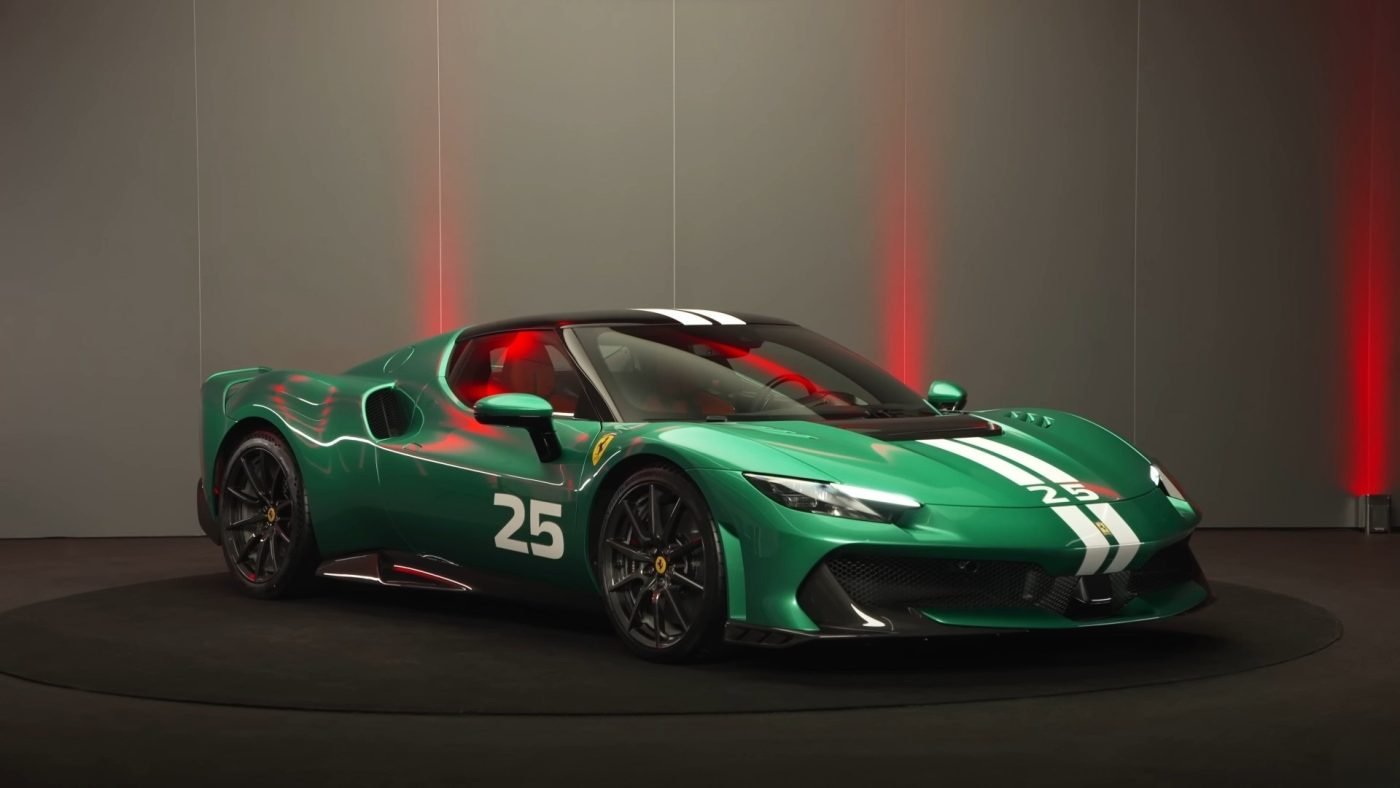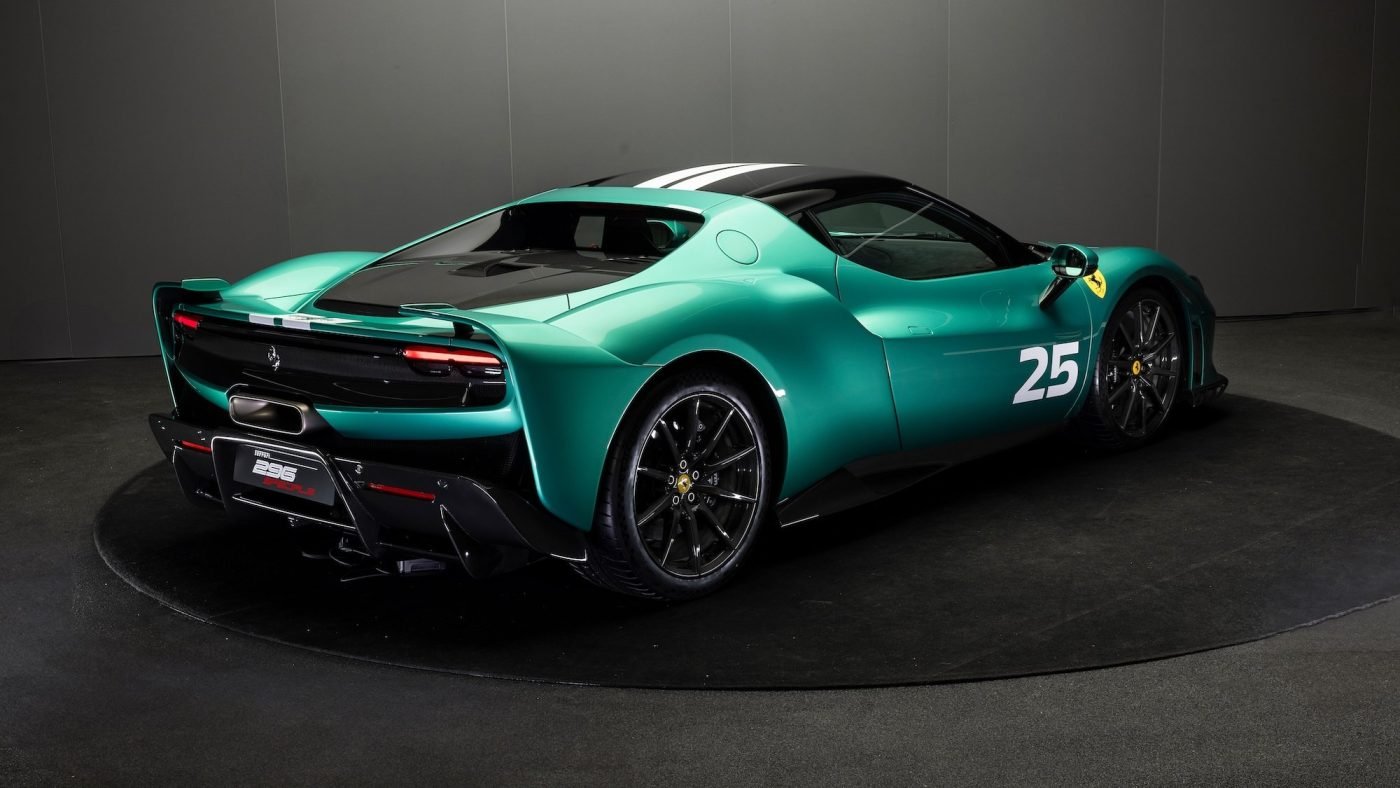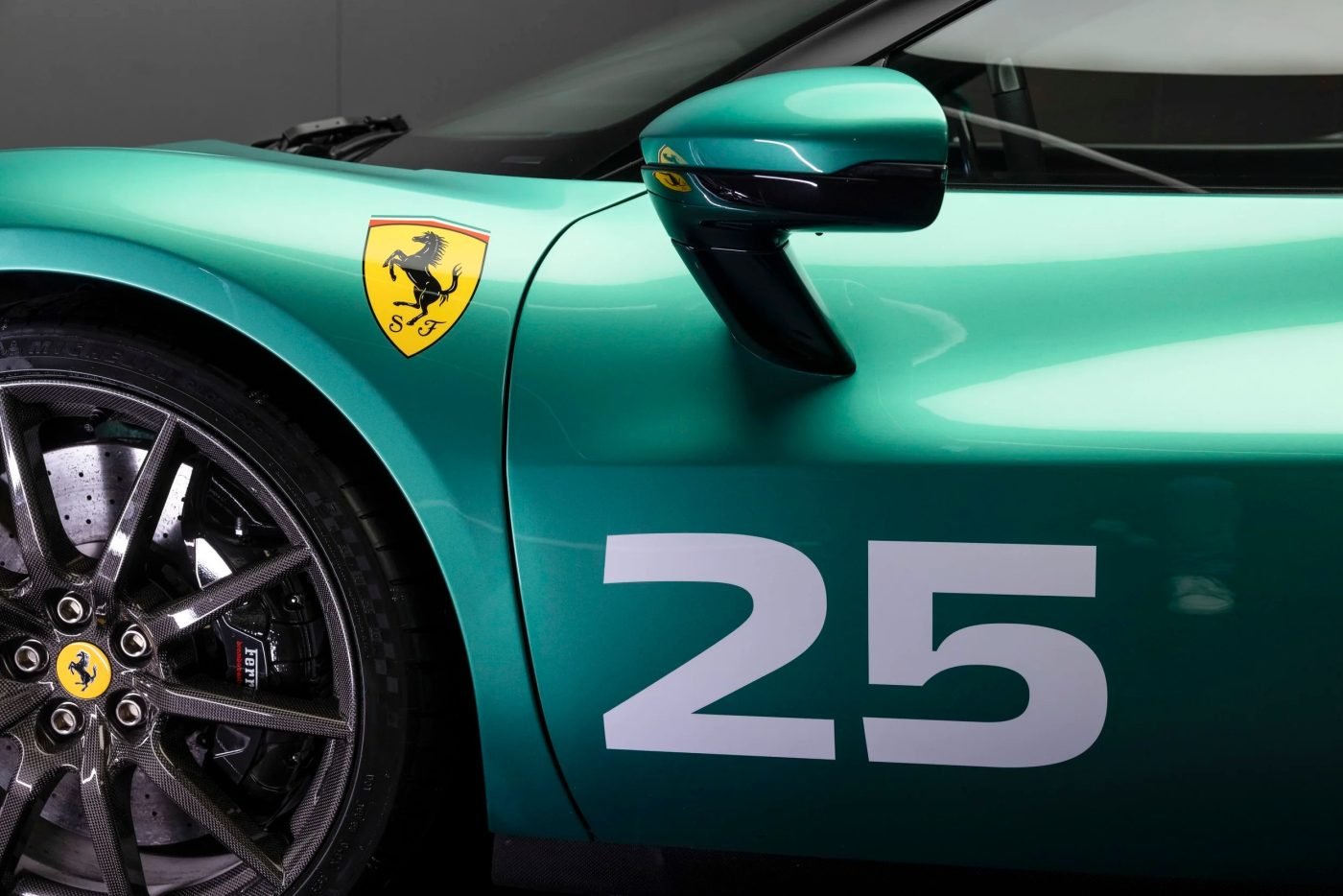Ferrari’s new 296 Speciale is the latest evolution in a bloodline that stretches back to the 360 Challenge Stradale.
This is the first special-series car to use a V6 hybrid instead of a V8, and it’s also the first time Ferrari has reused a nameplate from its V8 range.
That ties it directly to the legendary 458 Speciale, which remains one of the greatest naturally aspirated supercars ever built.
The powertrain starts with a turbocharged 3.0-litre V6 hybrid paired with a 7.45 kWh battery.
Curated news for men,
delivered to your inbox.
Join the DMARGE newsletter — Be the first to receive the latest news and exclusive stories on style, travel, luxury, cars, and watches. Straight to your inbox.
The combustion engine makes an extra 36 horsepower over the standard 296 GTB thanks to lifted mapping from the 296 Challenge race car.
The electric motor sitting between the engine and the eight-speed dual-clutch transmission now delivers 177 horsepower.

Combined output hits 868 horsepower. That’s a 49-horsepower increase, which Ferrari admits could have been higher if they pushed turbo boost more aggressively. But that’s not their style.
Weight savings matter more here anyway. The Speciale drops 60 kilograms compared to the GTB for a dry weight of 1,410 kilograms.
Power-to-weight ratio sits at 616 horsepower per tonne. Ferrari achieved this through obsessive detail work.
Titanium connecting rods borrowed from the F80 hypercar. Lightened nitrided steel crankshaft saving nine kilograms.
Specially machined block and crankcase with excess metal shaved off. Titanium screws and fasteners are used in the 499P endurance racer. Even the turbos got lightened by 1.2 kilograms each.
Performance figures back up the engineering. Zero to 100 km/h takes 2.8 seconds. Zero to 200 km/h happens in 7.0 seconds flat, matching the LaFerrari.

Top speed reaches 205 mph. Around Fiorano, it laps in 1 minute 19 seconds.
That’s two seconds faster than the GTB, 7.5 seconds quicker than the 360 Challenge Stradale, and 0.7 seconds ahead of the LaFerrari.
The aerodynamics generate 435 kilograms of downforce at 155 mph, up 20% over the standard car.
A new aero damper links the front undertray to the bonnet with a duct channelling airflow to the windscreen edge.
Louvres in the wings reduce pressure and turbulence. Vertical fins and extra wings at the rear work with the active rear spoiler, which now moves faster between Low Drag and High Downforce configurations.
There’s also a new Medium Downforce setting for more consistent response during cornering and braking.
The exterior wears a black roof, revised rear graphic between taillights, scalloped bonnet, dark engine cover, and new forged diamond-cut wheels.
Ferrari introduced Verde Nürburgring, a punchy metallic green, as a new colour option.
The car sits five millimetres lower than the GTB and rolls 13% less during cornering.
The steering wheel now features physical buttons instead of the haptic units that appeared on the GTB.

Carbon-fibre and Alcantara dominate the cabin. The seats drop five kilograms each. Door panels are made from single carbon-fibre blocks.
The control tunnel between seats uses entirely carbon-fibre construction.
Front storage shrinks slightly to 169 litres with an additional 112 litres behind the seats.
Bespoke Michelin Pilot Sport Cup 2 tyres come standard with stiffer sidewalls, new tread compound, and improved lateral rigidity.
The 398 millimetre front carbon-ceramic brakes deliver relentless stopping power. Multimatic adjustable shocks derived from the 296 GT3 race car pair with stiffer, lighter titanium springs.
Pricing starts around $860,000 AUD before options, but expect that figure to climb past one million dollars with necessary additions like the carbon pack, special livery, and personalisation options.
Ferrari offers a three-year unlimited-kilometre warranty and a seven-year maintenance program with service intervals at 20,000 kilometres or annually.

